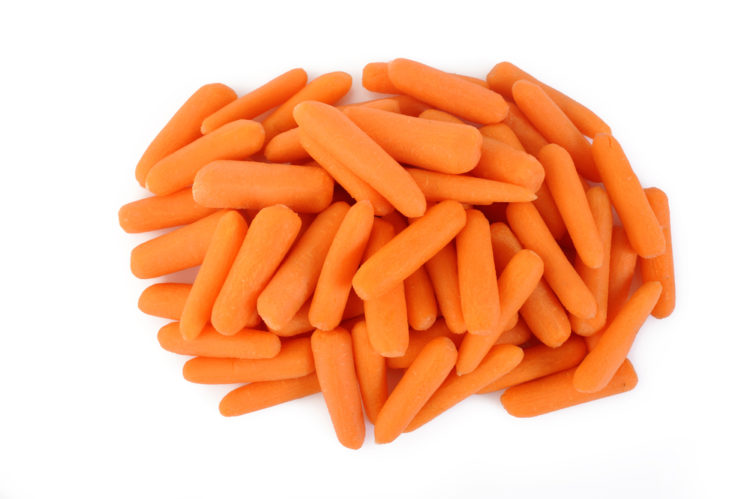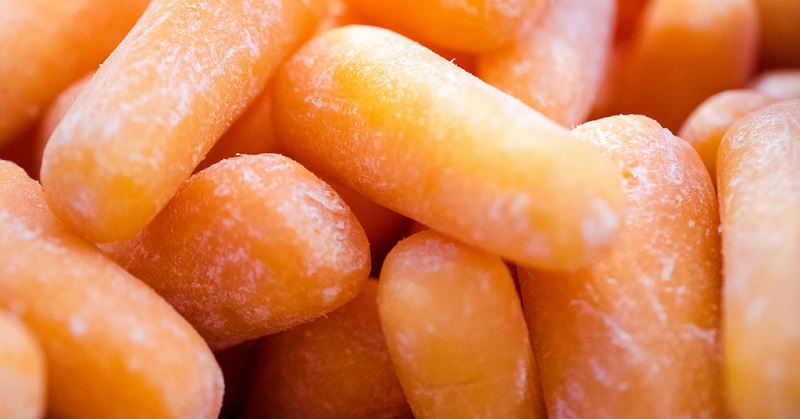Ah, baby carrots. They’re small. They’re snackable. And they make for a great treat to go along with dip.
They’re also pretty terrible for you.
There, I said it.
I’ll give you a moment to pick your jaw and broken heart off the floor.
Ready to move on?
Let’s take a look at what exactly makes baby carrots so terrible.
How Baby Carrots Are Grown

The problems begin at the manufacturing stage.
When baby carrots were first popularized in the 1980s, they originated from larger carrots — still the thin, scraggly kinds — that were cut and reshaped in much smaller batches. (1)
That’s a far cry from today’s production standards. Machines have taken over the entire process, mowing down rows of carrots and pulling up 75 tons of carrots per hour. The machines remove the skin from the carrots, cut and reshape them into uniform little pieces. (2)
Then, the baby carrots are soaked in a chlorine bath.

You know, chlorine – the stuff that was once used as a chemical weapon. (3)
Household exposure to even small amounts of chlorine has been linked to eye tearing, nose and throat irritation, as well as sneezing, excess salivation and restlessness. (4)
Consumers are already exposed to notable amounts of chlorine through tap water. To prolong shelf-life, baby carrots are dipped in a chlorine-water mixture. (5)
By the way, bleach is not chlorine but is a mixture that contains chlorine. (6)
Further long-term exposure to chlorine through baby carrots has been linked to liver malfunction and weakening of the immune system. And those are just the risks experienced by humans. Chlorine poses significant threats to the environment as well, affecting the immune, circulatory, and respiratory systems of animals and other organisms – specifically those living in water and soil. (7)
Why are baby carrots chlorinated in the first place?

Firstly, chlorine kills just about all the bacteria that has remained attached to baby carrots throughout the rushed, unsanitary manufacturing process.
While that may seem like a good thing, remember that there are plenty of good, healthy bacteria that occur naturally on produce. Those die, too – just like the good bacteria in your body does when you ingest chlorine.
Secondly, baby carrots are rinsed with chlorinated water (think watered-down bleach) to keep them looking enticing. Companies producing baby carrots often cut corners by improperly irrigating their produce. (8)
Third, that “white blush” or “carrot blush” on pale carrots shows their age. As cut baby carrots sit on the shelves, they simply dry out. The chlorine rinse could potentially prolong a fresh look because it adds water to processing. (9)
That’s a bit disturbing, isn’t it?
Even organic baby carrots are soaked in chlorine.
Sorry, guys.
Nutritionists recommend that consumers buy whole, unprocessed and organic carrots and whittle them down on their own to stay safe from chlorine. (10)
Carrots don’t have to be bite-sized and snackable to be healthy and nutritious. Opt for fully mature carrots and remember – keep a little dirt on there!
So were you surprised to learn the truth about processed baby carrots? Let us know your thoughts in the comments!


